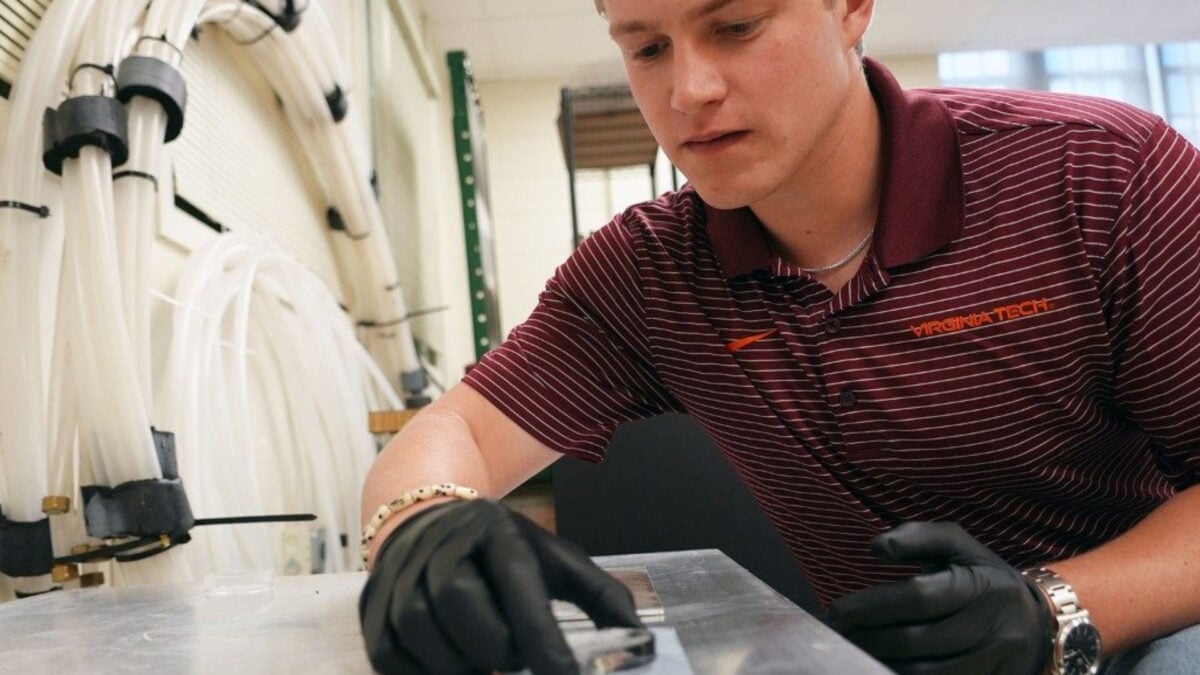These Chunks of Ice Move All By Themselves, Thanks to a Cool Engineering Trick

It looks like something straight out of a Ouija board horror movie, but frosty—researchers have figured out how to make ice move by itself.
A video capturing the creepy dynamic features an ice disk melting on a metal surface etched with an asymmetrical herringbone pattern. The ice and its small puddle slowly start to move sideways before suddenly picking up speed and slingshotting across the metal plate. The researchers suggest that this sort of independent movement could one day generate power.
“We demonstrate solid–liquid self-propulsion using ice disks on herringbones. By rectifying the flow of the underlying meltwater, we achieve self-propulsion of the solid without resorting to an external force (i.e., no wind flow),” the team explained in a study published Thursday in the journal ACS Applied Materials & Interfaces.
To do so, the researchers etched narrow, asymmetric channels in a herringbone pattern into an aluminum surface. When they placed the ice disk on top of the metal plate, the ice slowly melted. The grooves directed the meltwater to flow in one direction, carrying the remaining ice along with it.
“A good analogy is tubing on a river except here, the directional channels cause the flow instead of gravity,” Jack Tapocik, a Ph.D. student in mechanical engineering at Virginia Polytechnic Institute and State University (Virginia Tech) and co-author of the study, said in a university statement.
[embed]https://www.youtube.com/watch?v=o-7w-m0nU1A[/embed]
Tapocik and his co-workers were inspired to create this surface by California’s Racetrack—a dry lakebed in Death Valley with boulders that seem to move on their own, leaving mysterious trails along the scaly earth that have puzzled scientists since the 1940s.
In 2014, researchers discovered that when rainwater freezes and then starts to melt again, the breeze pushes ice rafts around, which moves the rocks. In the case of the moving ice study, however, the ice moves without external forces like wind. In a second trial, the team covered the herringbone pattern with water-repellant spray. They expected the disk to move even faster, but instead it stayed put.
“On a waterproof surface, the excess meltwater above the channels gets squeezed out very easily,” said Jonathan Boreyko, a co-author of the study who leads the Nature-Inspired Fluids & Interfaces Lab at Virginia Tech. “This makes the ice disk stick to the surface’s ridges. The meltwater is still flowing along the channels, but the ice can’t ride along anymore,” he explained.
“The fun trick here is that as the meltwater flows beyond the front edge of the ice disk, it creates a puddle. Having a flat puddle on one side of the ice creates a mismatch in surface tension, which dislodges the ice and causes it to shoot across the surface,” he added. The team describes this as a slingshot effect.
Beyond an obscure claim to fame—the researchers think their surfaces have the fastest ice on the planet—you might be wondering what the point of this experiment is. The answer is that it could have implications for rapid defrosting and even new ways of harvesting energy.
“If the surface structure were patterned in a circle rather than a straight line, the melting object would continually rotate,” Boreyko said. “Now imagine putting magnets on top of the ice, rather than boulders. These magnets would also rotate, which could be used for power generation.”
The study ultimately joins a host of other creative research shedding light on potential alternative energy sources, which we need now more than ever.









